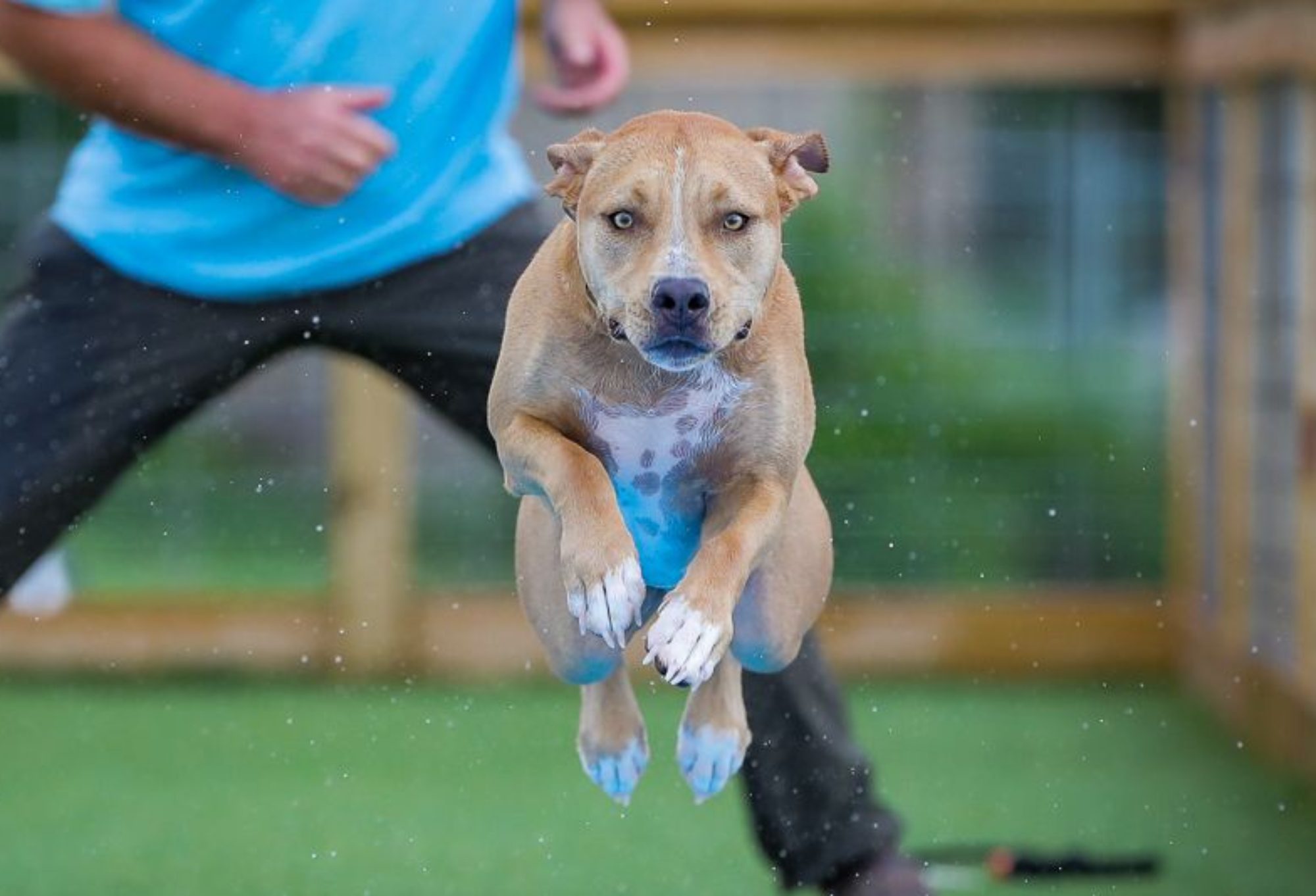A good friend of mine recently introduced his lovely very willing 16 months old labrador to the discipline of Air retrieve aka Fetch it and caught her very first catch on video. The footage is very short but packed with super helpful body displays of dog and handler, providing insight into the animals training behaviour and how she refers to previously adopted training patterns to eventually solve the challenge being introduced to. For many – including me and Bernhardt – the first steps are the hardest, different trainers have very different approaches and every positive input as tiny and as banal it might seem can make the heck of a difference. So let’s get started :
The bumper is placed correctly in very short distance of the edge so that the dog just stretching out barely having to jump could grab it but far enough for her not being able to touch it. There is plenty enough toy drive and curiosity here wanting to get it displayed through her body language. One can see her inspecting the edge of the dock, looking for ways to cross over, checking the depth of the drop and water surface almost like saying: “really, is there no bridge here?” There is one deep duck down looking like she might want to glide down the edge – that actually would be the natural self preserving choice . At no point whatsoever is there even the slightest hint of tightening her body set to jump. To understand that behaviour one should consider that most dogs shy off the two foot drop as soon as they stand on the edge. They don’t know how deep the water is, there could be debris or rocks or tree stumps right under the surface and for gliding of it it is to steep and eventually to high. Even very experienced diving dogs want necessarily ever jump from a halt – and truly they shouldn’t since it could lead to some uncoordinated landings tail down first with the risks of injuries.
The handlers body language is enticing, trying to vocally intrigue, to motivate, pointing at the obstacle. I like that his body position is firm in one spot not much moving and there is absolutely no negative frustrated anxiety or signs that any force is about to be used. He is very positively believing that this could work and that is of tremendous importance. His dog and him are here as a pack, a team trying to solve a puzzle and the flow of spiritual energy is present all the time without any physical contact – as much tempting it might feel to do the opposite.. All of this has to lead to that the dog starts to think out different battle plans – just like in hunting for food – to eventually create the solution and to succeed. On her own with some human help. Only those results will lead to positive reliable training patterns. The reward is ultimately just the problem solving by itself.
Eventually the dog stunningly takes the initiative, steps a few strides backwards, kicks off and jumps at the toy. She remembered her confirmed jump patterns from her Distance jump schooling, realized that the way to overcome the gap from dock to toy needs a little extra charge and just did that. I personally found that video amazing just for that read. There was no handler support nor any body signal to get her back at the dock, to place her or any other signal she could have read to do so. It was a superior instinct combining already known training patterns with the new seemingly unsolvable.
Based on that display one could now proceed by placing the dog on the edge, repeating all the stimulation, waiting for a brief “solving the puzzle” display to than gently finger grab the collar and lead her a few strides backwards. Turn her, release and either let her execute the charge or even run a few steps with her towards the hanging toy. In this case here i tend to believe that just replicating her demonstrated behaviour that lead to success by leading her back some being the only assistance would do the job just fine.
Of course you just never want to forget to praise, applaud and cheer for you dog, my friend did here great too. To him i say a big thank you having given me this awesome tutorial video and to his dog I say – thank you for teaching us how it’s done in your world !
